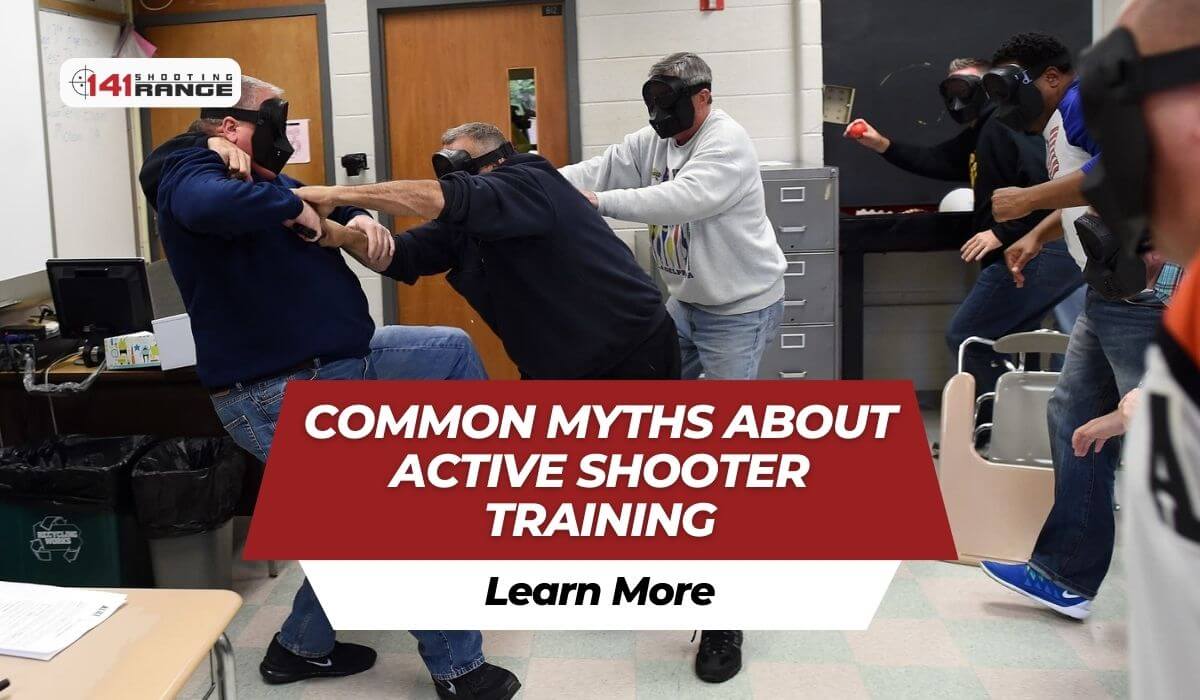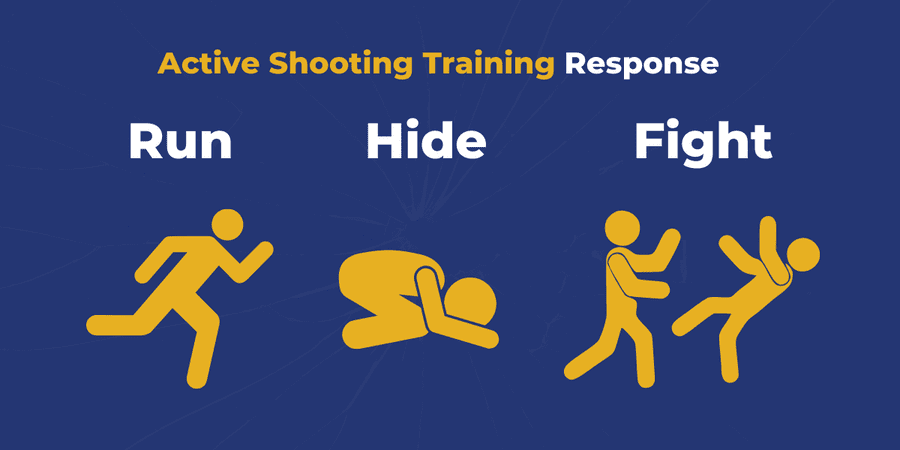Why Active Shooter Training Is Important for Office Safety And Security
Why Active Shooter Training Is Important for Office Safety And Security
Blog Article
Carrying Out Active Shooter Training: Finest Practices for Creating a Safe and Prepared Neighborhood Atmosphere
As communities challenge the distressing truth of energetic shooter events, the application of comprehensive training programs ends up being crucial. What are the critical aspects that can change a basic training program into a robust model for neighborhood durability?

Comprehending the Demand for Training
In a period marked by increasing cases of physical violence in public spaces, recognizing the need for active shooter training has never been extra crucial. The prevalence of mass shootings across various environmentsâEUR" such as colleges, work environments, and buying centersâEUR" underscores the necessity for individuals and companies to be planned for such emergencies. Energetic shooter circumstances can unravel quickly, leaving little time for individuals to respond properly. Therefore, thorough training campaigns can outfit individuals with the expertise and skills to respond emphatically.
Training fosters a feeling of empowerment and readiness, enabling individuals to feel more protected in their environments. The benefits of energetic shooter training extend past prompt response; they consist of boosting communication protocols and improving overall safety and security actions within organizations.
Secret Elements of Effective Programs
Effective active shooter training programs integrate a number of essential components that enhance preparedness and feedback capacities. Extensive curriculum advancement is necessary, making sure that training material is relevant, evidence-based, and customized to the certain requirements of the company or neighborhood. This consists of comprehending the characteristics of energetic shooter occurrences and the emotional effect on people involved.
Second, reasonable training circumstances must be employed to simulate possible scenarios, enabling participants to practice decision-making and response approaches in a controlled atmosphere. These drills facilitate muscle memory and construct confidence amongst individuals.
Third, a focus on communication methods is critical. Establishing clear lines of interaction among legislation enforcement, emergency responders, and individuals ensures worked with actions during an event. Normal updates and correspondence course assist maintain communication pathways clear and effective.
4th, recurring assessment and comments systems should be integrated right into the training program - active shooter training. Evaluating the efficiency of training through participant feedback and efficiency metrics enables continual improvement
Finally, fostering a culture of safety and readiness within the neighborhood urges watchfulness and aggressive actions, making sure that individuals are not just trained yet likewise engaged in keeping a protected atmosphere.
Engaging Area Stakeholders

To efficiently involve these stakeholders, it is vital to communicate the objectives and advantages of the training. Holding educational sessions can help clear up the training's objective, address problems, and detail the functions each stakeholder may play. Developing a stakeholder consultatory board can facilitate continuous discussion, allowing for varied viewpoints and insights to be incorporated right into the training program.
Structure connections with community leaders and organizations is likewise vital. Their assistance view can improve outreach initiatives, increase participation, and ensure that training is customized to the distinct needs of the area. In addition, stakeholders can assist in disseminating info and sources, reinforcing the message of safety and security and preparedness.
Ultimately, engaging area stakeholders not just strengthens the training initiative but likewise cultivates a feeling of possession amongst locals, causing a much more resilient and enlightened community efficient in responding effectively to possible dangers.
Training Distribution Approaches
Utilizing a variety of training shipment methods is vital to accommodate the diverse knowing designs and requirements of participants in active shooter training programs (active shooter training). Efficient training can take a number of types, including lectures, hands-on simulations, online components, and interactive workshops. Each method serves an unique objective and can improve the overall understanding experience

On the internet modules provide flexibility and ease of access, enabling individuals to learn at their very own speed. These can include video clips, quizzes, and discussions to evaluate understanding. Interactive workshops urge group conversations and analytical, promoting synergy and interaction abilities.
Incorporating a blended approach that integrates these techniques not just enriches the training experience yet also makes sure that individuals are much Our site better prepared to react efficiently in the occasion of an energetic shooter circumstance (active shooter training). By addressing various finding out choices, companies can create a more informed and receptive neighborhood
Continual Analysis and Enhancement
Regular analysis and enhancement of energetic shooter training programs are vital to you can check here keeping their relevance and effectiveness. As threats advance, so need to the approaches and methodologies used in training. Continual assessment guarantees that training material shows the most recent knowledge on active shooter events, integrating lessons learned from current events and adjusting for arising trends.
To promote this procedure, organizations must develop responses systems that include participant examinations, professional reviews, and occurrence debriefs. Gathering information on individual efficiency during drills and exercises is crucial, as it highlights locations requiring enhancement and notifies future training sessions. Furthermore, engaging with police and emergency -responders can provide valuable insights into the functionality and applicability of training procedures.
On a regular basis arranged evaluations of training materials and methods must be mandated, cultivating an atmosphere of technology and adaptability. Organizations has to additionally urge a culture of recurring learning, where team member feel equipped to recommend adjustments based upon their experiences. By dedicating to continual evaluation and enhancement, companies not just boost the performance of their energetic shooter training programs but additionally enhance their total commitment to safety and readiness within the area.
Conclusion
Finally, efficient implementation of active shooter training requires a thorough method that focuses on community involvement and reasonable simulations. By creating tailored educational programs, incorporating varied training approaches, and cultivating collaboration amongst stakeholders, areas can boost readiness. Continual examination and responses systems are important for adjusting programs to arising threats, therefore enhancing total safety and security. Eventually, a dedication to continuous training and enhancement cultivates a culture of alertness and preparedness, ensuring a much safer environment for all area members.
Report this page